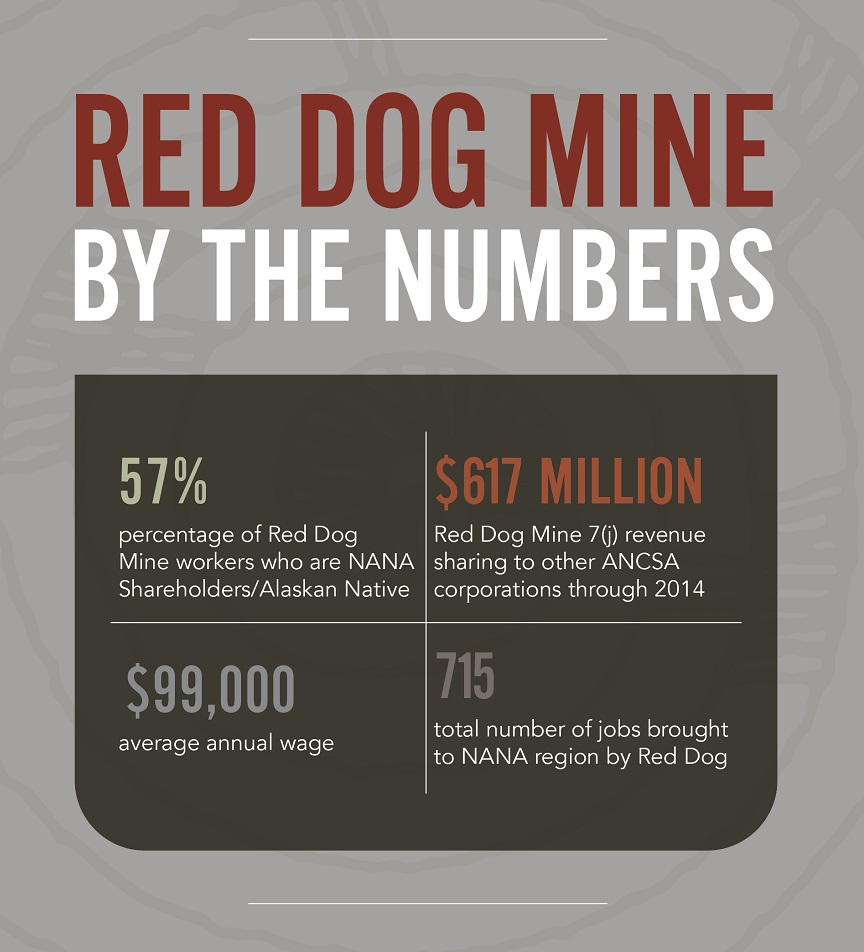Welcome to the electronic version of Storyknife articles.
How One Mine Transformed the Northwest Arctic Borough
By Rosie Barr, Calista Corp. Vice President of Lands and Natural Resources
Storyknife, September 2018 edition
As a NANA shareholder, former NANA vice president of Lands and now vice president of Lands and Natural Resources for Calista Corporation, I know how a mine and indigenous people can both co-exist and complement each other.
I personally saw how the Red Dog Mine has been a positive transformation for the men, women and children of the Northwest Arctic Borough. I saw how Teck, a mining company, strived to do its best to be respectful of our culture and support our subsistence way of life.
I worked closely with Teck and the Red Dog Subsistence Committee (comprised of Kivalina and Noatak residents) to discuss mine operations and ways to avoid impacts to the environment and subsistence activities. We met on a quarterly basis and increased the frequency of our meetings during the spring seal and fall caribou hunting periods.
Also read: My Career At Donlin Gold
I personally saw how the timing of the annual shipping schedule for Red Dog concentrate is built around the needs of the subsistence hunts for bearded seals and beluga. I also saw the benefits of having the concentrate trucks traveling from the mine to the port site halted during caribou migration across the transportation corridor.
I also witnessed the stream downriver from the mine grow healthier because the mine created diversion ditches, moving the natural flow of water away from the ore bed.
Before the mine, the water upstream and water flowing through the Red Dog Mine had very high levels of naturally occurring metals, which created a naturally toxic environment, incapable of supporting aquatic life.
Read ISER’s Study of the Red Dog Mine
Red Dog’s treated water discharge has helped to improve the water quality downstream of the mine so that the stream now sports a thriving Dolly Varden population where one could not exist before. This improvement occurred because the mine has discharged treated mine water for more than 25 years, which is of better quality than the natural receiving waters.
The mine has done more than focus on being culturally sensitive and protective of the environment. It has served as an agent of positive change for the Northwest Arctic Borough. The economic activity sparked by the mine has increased villagers’ economic opportunity, increased median household incomes and provided good-paying jobs. Revenue from the mine also allowed the Northwest Arctic Borough to fund the construction of new schools in the region. NANA assisted in the formation of the borough in anticipation of Red Dog Mine operations.
It takes foresight, commitment, strong partnerships and continuous communication to develop our natural resources in a way that protects our subsistence way of life and delivers real economic benefits to our neighbors.
(Scroll down to continue reading)

The YK Delta now has a similar opportunity with the great treasure it has in Donlin Gold. Calista Corporation and The Kuskokwim Corporation have signed strong agreements with the mining company, agreements that will make certain that mining is done responsibly, and the residents benefit from the asset they own.
As the Vice President of Lands and Natural Resources for Calista, my responsibility is to work with Shareholders, residents and organizations of the YK Delta, the project staff, and the regulatory agencies. I work to keep the water and subsistence resources—such as salmon—protected. This is critical for any project development and the highest priority for Calista.
As Shareholders, I hope that many of you will pursue higher education for mining careers, and particularly, environmental sciences. Our goal is to have as many Shareholders as possible working at the mine, ensuring that the mine operates to the highest environmental standards. Please join us.
The Donlin Gold Project gives us hope and opportunity.